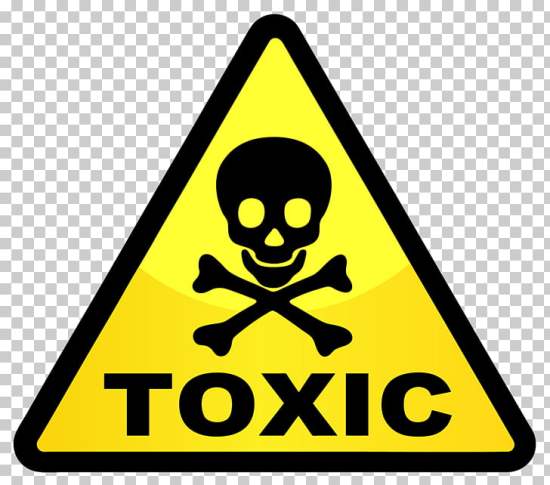If you’ve been following media coverage of some of the not-so-wonderful aspects of the current American workplace, then you may have encountered the growing cacophony of references to “toxic workplaces,” “toxic work environments,” “toxic jobs,” and the like. (If you doubt me, do a few Google searches and you’ll quickly see what I mean!)
It appears that a mix of the following has given rise to generic references about toxic work settings:
- The MeToo movement;
- The pandemic and overwork of workers in essential job categories;
- The Great Resignation;
- Diversity, equity, and inclusion;
- Political and social discord;
- Bullying and incivility;
- Attention to bad bosses;
- Wage stagnation and benefit cuts;
- The recent dramatic uptick in union organizing.
Organizational behavior research from years ago taught me that different forms of workplace mistreatment tend to run together in packs. Thus, if you encounter a workplace rife with sexual harassment, then you’re quite likely to see other forms of interpersonal mistreatment flourishing as well. Contemporary news accounts often confirm this. For example, I’ve noticed that investigative pieces focusing on sexual misconduct in a given workplace often then segue into describing behaviors that might be labeled as bullying and/or incivility.
In any event, if we wish to create healthier, happier, and more productive workplaces, then we need to dig beneath the generic tag of toxicity and ask specifically what’s going on. The results may yield different problem areas and different fixes. Some bad behaviors may be intentional. Others will fall under the categories of negligence or dysfunction. Some may implicate employment and labor law violations. Certain concerns may be organizational in nature; others may be limited to a department or working group.
It’s also true that, on occasion, frequent complainers will invoke the language of toxicity to avoid supplying specific allegations that won’t hold up. Some will do so as attempted shields against accountability for their own inadequate work performances.
That said, I feel confident in saying that there is a fair amount of genuine unhappiness and undue stress in our workplaces during this snapshot moment in time. Some of the causes may be beyond the means of even well-intentioned organizations to remedy. But good employers will address worker concerns with attention to detail and an innate sense of fairness and dignity, while bad ones will dismiss reports of workplace toxicity and sometimes pay the consequences.

Dear David, I find all of your posts on Safe Harbor insightful and informative. This is the first piece I’ve read whose meaning is a bit lost on me. I’m not sure what your critique of the term “toxic workplace” is. But organizationally this is how our minds work. Set, subset, subsubset. Intersectional terminology unites set units.
Is your concern that the term “toxic workplace” itself will become so overused that it no longer means anything?
In this arena, I feel like the fundamental linguistic obstacle re WPB is that we exist on tightrope. There is language that is too hot, or too cold. There is no language that is just right. Toxic workplace – the first time you hear it – sounds like a hystericism. Somewhere along the way, it flips on the emotional radar screen to a term of no concern. There seems to be no transition zone in which it means anything but to the affected.
There are so many reasons we are losing. There is something other injustices possess in terms of identity that eludes us. Especially in America, with our alleged Christianity guiding out moral path, “loser” is a term less taxing than anything that attaches to personal conscience.
Justine Melo, PhD University at Buffalo, School of Law
Hi Justine, thanks for your comment! It’s not that I’m criticizing the term toxic workplace (or variations thereof), but rather, I’m saying that (1) the term alone doesn’t tell us enough about the specific behaviors; and (2) said specificity matters in terms of identifying responses and fixes. For example, in the U.S. at least, some types of toxic work behavior are unlawful (e.g., sexual harassment), while others are largely lawful (e.g., workplace bullying). The legal distinction alone is an important one. So, while I’m glad that variations of this phrase are highlighting mistreatment at work as a sort of umbrella term, I’m suggesting that we need to quickly look under that umbrella. I hope that explanation is helpful! David
I hope and am thankful of this articles bravery in debating and highlighting the very real threat of toxic environments which inhibit ambient abuse and workplace mobbing upon a traumatised patient, as they attempt to navigate through this unforgiving landscape sometimes more than ever alone, in some cases these are not even viewed as ‘real occurrences’ but resulting from chemical imbalances within the victim, this active denial attributes to open oppression, and not at all welcoming of people forced into these harmful and triggering situations,and I thank the writer for addressing this trend or culture.
Thank you David for the post and Justine for the comment. Just yesterday I read a short article about six employees who resigned from a major Wall Street bank due to heavy workloads and meager bonuses. The article described the departing staff as a ‘wave’ of resignations from a ‘toxic’ work environment. The article was in the New York Post and I felt that an unfortunate byproduct of the piece could be a dilution of the concept and definition of a toxic workplace.
People who have experienced workplace bullying in one of its many forms might argue that heavy workloads and meager bonuses can be part of the injurious behavior in a toxic workplace, but the reality of workplace bullying/toxic work environments is often more complex and emotionally damaging than what was described in the Post article. I think it will be important to be as precise as possible when using terms like ‘toxic workplace’; otherwise, such terms may become meaningless and protections for people experiencing such environments could slip further out of reach.